Your cart is currently empty!
Tag: Companies
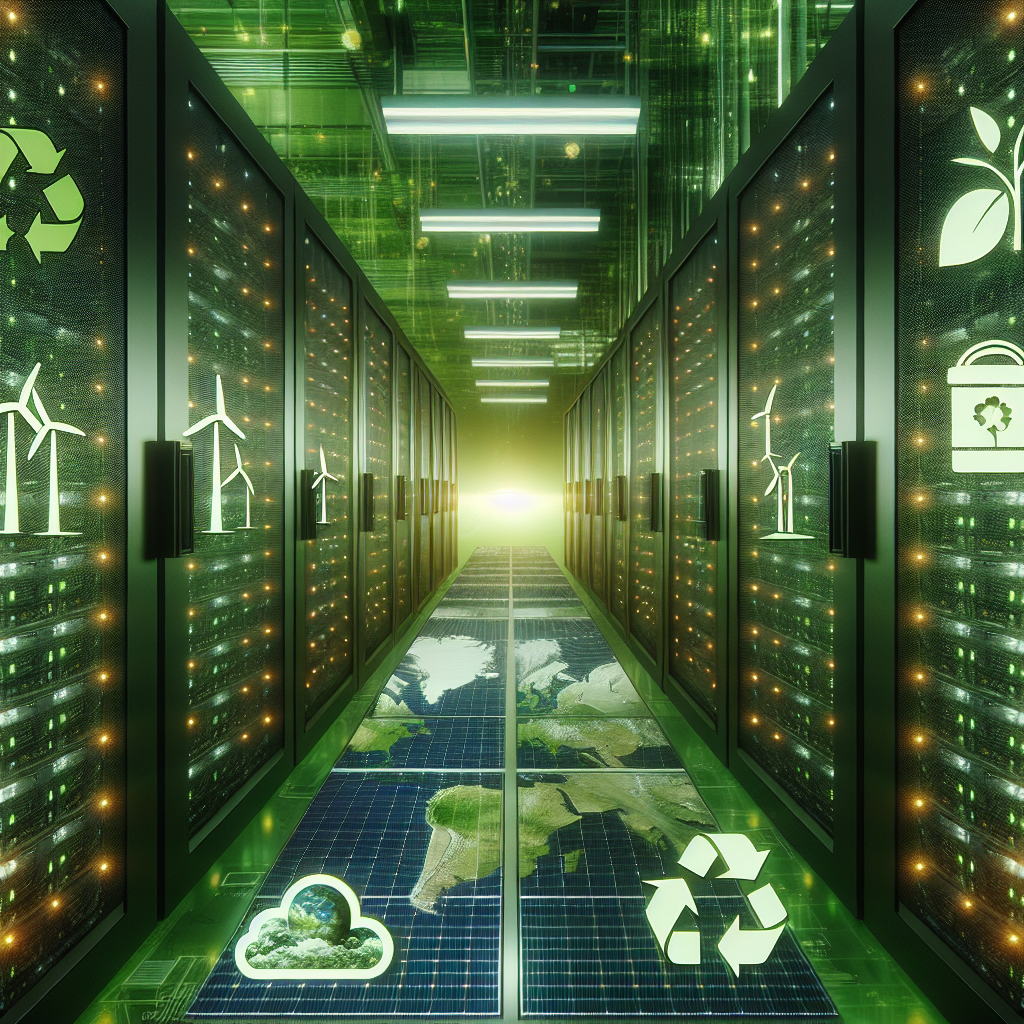
The Importance of Data Center Sustainability: How Companies are Going Green
Data centers are the backbone of modern businesses, providing the computing power and storage necessary to keep operations running smoothly. As companies become increasingly reliant on data centers to store and process vast amounts of information, the environmental impact of these facilities has come under scrutiny. In response, many companies are now prioritizing sustainability in their data center operations.The importance of data center sustainability cannot be overstated. Data centers consume massive amounts of energy, contributing to greenhouse gas emissions and other environmental harms. In fact, data centers are estimated to account for about 1% of global electricity consumption, a figure that is only expected to rise as the demand for data storage and processing continues to grow.
To address these concerns, many companies are taking steps to make their data centers more environmentally friendly. This includes investing in energy-efficient technologies, such as server virtualization and cooling systems that use less electricity. Companies are also exploring renewable energy sources, such as solar and wind power, to power their data centers.
In addition to reducing energy consumption, companies are also focusing on other sustainability initiatives in their data centers. This includes using environmentally friendly materials in construction and design, implementing water-saving measures, and recycling electronic waste.
The benefits of data center sustainability are numerous. Not only does it help companies reduce their carbon footprint and meet environmental goals, but it can also lead to cost savings and increased efficiency. By using energy more efficiently and reducing waste, companies can lower their operating expenses and improve their bottom line.
Furthermore, companies that prioritize sustainability in their data center operations are also likely to improve their reputation with customers and investors. As consumers become more environmentally conscious, they are increasingly looking to support companies that demonstrate a commitment to sustainability. By going green in their data center operations, companies can attract and retain customers who value environmentally responsible practices.
Overall, the importance of data center sustainability cannot be ignored. As companies continue to rely on data centers for their operations, it is crucial that they take steps to minimize their environmental impact and promote sustainability. By investing in energy-efficient technologies, renewable energy sources, and other sustainability initiatives, companies can not only reduce their environmental footprint but also improve their bottom line and enhance their reputation with customers. Going green in the data center is not just good for the planet – it’s also good for business.
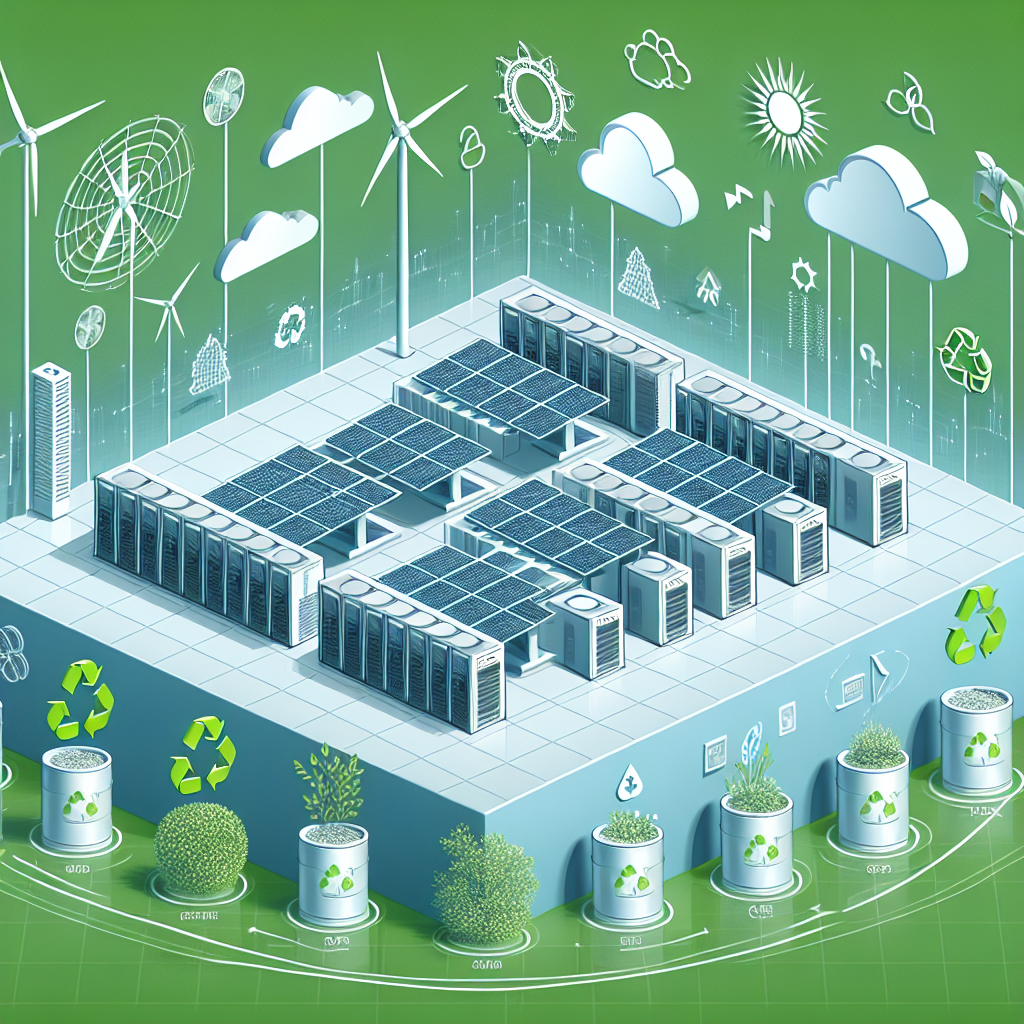
Eco-Friendly Data Centers: How Companies are Embracing Energy Efficiency
In today’s digital age, data centers are the backbone of the internet and play a crucial role in storing, processing, and managing vast amounts of data. However, the energy consumption of data centers has become a growing concern as the demand for data storage continues to increase.To address this issue, many companies are now focusing on building eco-friendly data centers that prioritize energy efficiency and sustainability. These data centers are designed to minimize their environmental impact by reducing energy consumption, utilizing renewable energy sources, and implementing innovative cooling technologies.
One of the key ways companies are embracing energy efficiency in data centers is by optimizing their infrastructure and equipment. This includes using energy-efficient servers, storage devices, and networking equipment that consume less power and produce less heat. Companies are also adopting virtualization and consolidation techniques to maximize the utilization of their server resources and reduce the number of physical servers needed.
In addition to optimizing their hardware, companies are also investing in renewable energy sources to power their data centers. Many data centers are now powered by solar, wind, or hydroelectric energy, reducing their reliance on fossil fuels and lowering their carbon footprint. Some companies are even investing in on-site renewable energy generation, such as solar panels or wind turbines, to further reduce their environmental impact.
Furthermore, companies are implementing innovative cooling technologies to improve the energy efficiency of their data centers. Traditional cooling systems, such as air conditioning, can be energy-intensive and costly to operate. Companies are now exploring more sustainable cooling solutions, such as free cooling, liquid cooling, and evaporative cooling, which can significantly reduce energy consumption and lower operating costs.
By embracing energy efficiency in data centers, companies are not only reducing their environmental impact but also reaping financial benefits. Energy-efficient data centers consume less power, resulting in lower electricity bills and operational costs. Additionally, companies that prioritize sustainability and energy efficiency are seen as responsible corporate citizens, which can enhance their brand reputation and attract environmentally conscious customers.
Overall, the shift towards eco-friendly data centers is a positive trend that benefits both companies and the environment. By investing in energy efficiency and sustainability, companies can reduce their carbon footprint, lower operating costs, and position themselves as leaders in the green technology space. As the demand for data storage continues to grow, it is essential for companies to prioritize energy efficiency and embrace eco-friendly practices in their data center operations.

Case Studies: How Companies Are Leveraging DCIM to Drive Business Success
In today’s fast-paced and highly competitive business environment, companies are constantly seeking ways to gain a competitive edge and drive business success. One tool that many organizations are turning to in order to achieve this goal is Data Center Infrastructure Management (DCIM) software.DCIM software is a comprehensive solution that allows companies to effectively manage and optimize their data center infrastructure, including servers, storage, networking equipment, and power and cooling systems. By providing real-time visibility into the performance and efficiency of their data centers, DCIM software enables companies to make informed decisions that drive operational efficiency and cost savings.
One of the key ways that companies are leveraging DCIM to drive business success is through improved data center efficiency. By monitoring and analyzing data center performance metrics, such as power usage, cooling efficiency, and server utilization, companies can identify areas of inefficiency and implement strategies to optimize their infrastructure. This not only reduces energy consumption and operating costs, but also improves overall performance and reliability, leading to increased productivity and customer satisfaction.
Another way that companies are using DCIM to drive business success is through improved capacity planning. By accurately forecasting future data center requirements and identifying potential bottlenecks, companies can proactively address capacity issues before they arise, ensuring that their infrastructure can support business growth and scalability. This enables companies to make strategic decisions that align with their business goals and objectives, ultimately driving greater success and profitability.
Case studies provide real-world examples of how companies are leveraging DCIM to drive business success. For instance, a global telecommunications company used DCIM software to streamline its data center operations, resulting in a 30% reduction in energy consumption and a significant cost savings. By optimizing its infrastructure and improving operational efficiency, the company was able to enhance its competitive position in the market and drive business growth.
In conclusion, DCIM software is a powerful tool that companies can use to drive business success by improving data center efficiency, enhancing capacity planning, and optimizing infrastructure performance. By leveraging the capabilities of DCIM software, companies can gain a competitive edge, reduce costs, and position themselves for long-term success in today’s digital economy.
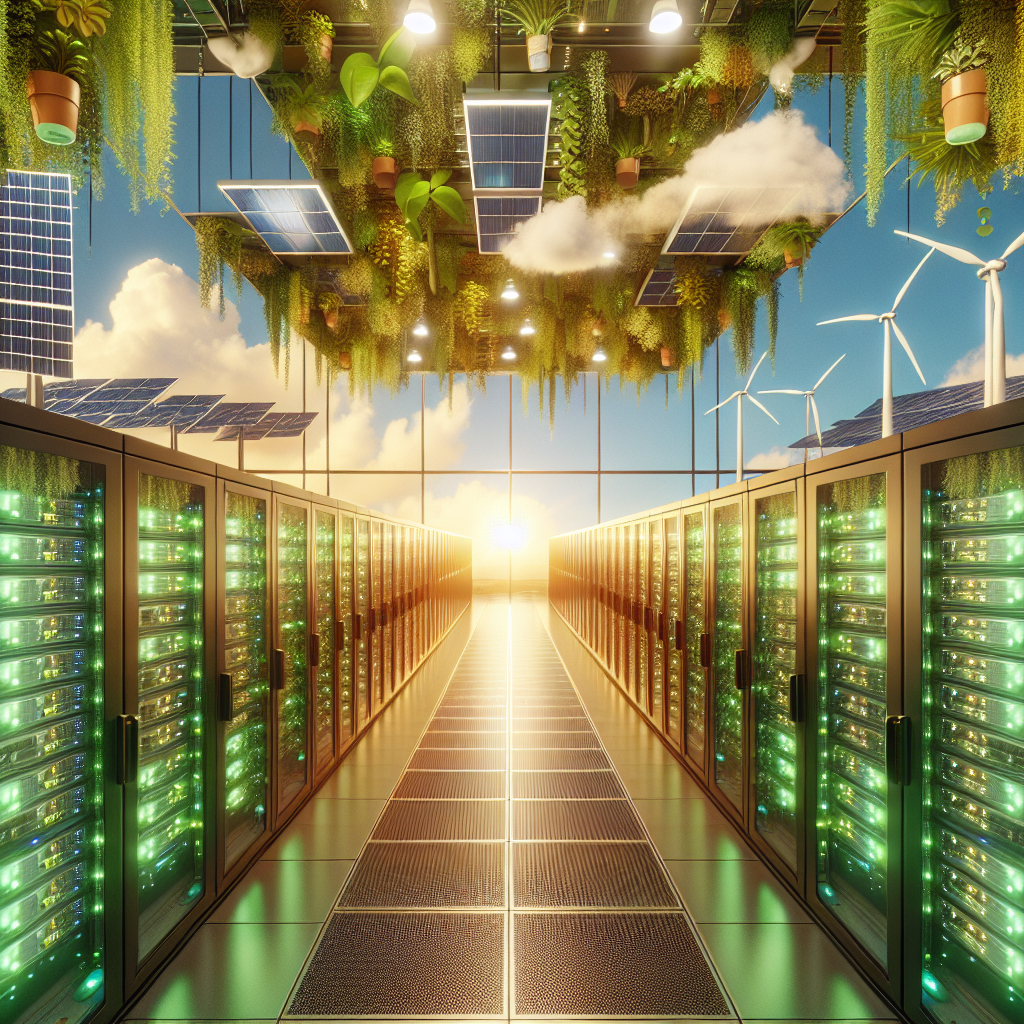
Eco-Friendly Data Centers: How Companies are Embracing Sustainable Practices
In recent years, there has been a growing emphasis on sustainability and environmental responsibility in all aspects of business operations. This includes the way companies manage their data centers, which are crucial for storing and processing the vast amounts of data generated in today’s digital world. As the demand for data storage continues to grow, so does the environmental impact of data centers. However, many companies are now embracing eco-friendly practices to reduce their carbon footprint and minimize their impact on the planet.One of the key ways companies are making their data centers more environmentally friendly is by investing in renewable energy sources. Traditional data centers consume a significant amount of electricity, which is often generated from fossil fuels. By transitioning to renewable sources such as solar or wind power, companies can significantly reduce their carbon emissions and reliance on non-renewable energy sources. This not only benefits the environment but also helps companies save on energy costs in the long run.
In addition to using renewable energy, companies are also implementing energy-efficient technologies and practices in their data centers. This includes using energy-efficient servers and cooling systems, optimizing airflow and temperature control, and implementing virtualization techniques to reduce the number of physical servers needed. By improving the energy efficiency of their data centers, companies can reduce their overall energy consumption and environmental impact.
Furthermore, many companies are also exploring innovative ways to reuse waste heat generated by their data centers. Waste heat is a byproduct of the cooling systems used to maintain the optimal temperature in data centers. Instead of letting this heat go to waste, some companies are finding creative ways to repurpose it for heating buildings or generating additional electricity. By finding ways to reuse waste heat, companies can further reduce their carbon footprint and improve the overall sustainability of their data centers.
Overall, the shift towards eco-friendly data centers is a positive development in the business world. By embracing sustainable practices, companies can not only reduce their environmental impact but also save money and improve their reputation among environmentally conscious consumers. As the demand for data storage continues to grow, it is essential for companies to prioritize sustainability and make a commitment to reducing their carbon footprint. By investing in renewable energy, energy-efficient technologies, and innovative waste heat reuse strategies, companies can create a more sustainable future for their data centers and the planet as a whole.
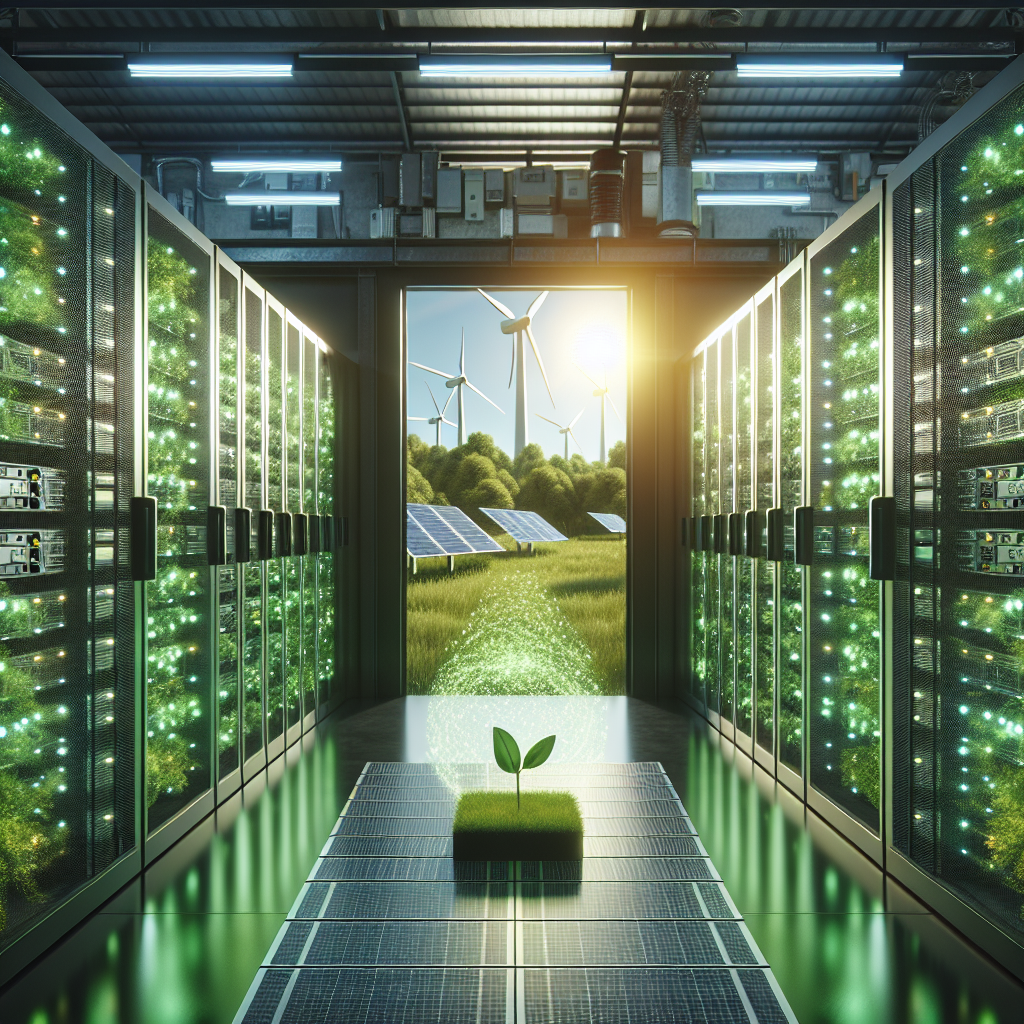
The Green Data Center: How Companies are Prioritizing Energy Efficiency
In today’s digital age, the demand for data storage and processing is higher than ever before. With the increasing use of cloud computing, big data analytics, and the Internet of Things, data centers have become a crucial part of our modern infrastructure. However, the environmental impact of data centers cannot be ignored.Data centers consume a significant amount of energy, and as a result, they contribute to greenhouse gas emissions and climate change. In fact, data centers are estimated to be responsible for around 2% of global carbon emissions, which is roughly equivalent to the emissions of the airline industry.
In response to this growing concern, many companies are now prioritizing energy efficiency in their data centers. One of the key strategies being implemented is the creation of green data centers. These data centers are designed and operated with a focus on minimizing energy consumption and reducing their environmental footprint.
There are several ways in which companies are achieving energy efficiency in their data centers. One common approach is to utilize energy-efficient hardware, such as servers, storage devices, and cooling systems. By using equipment that is specifically designed to consume less energy, companies can significantly reduce their energy consumption and lower their operating costs.
Another strategy that companies are adopting is the use of renewable energy sources to power their data centers. This includes solar, wind, and hydroelectric power, which are all environmentally friendly alternatives to traditional fossil fuels. By sourcing their energy from renewable sources, companies can reduce their carbon footprint and demonstrate their commitment to sustainability.
In addition to hardware and energy sources, companies are also implementing energy management software and monitoring systems to optimize their data center operations. By closely monitoring energy usage and identifying areas for improvement, companies can make informed decisions on how to further reduce their energy consumption.
Furthermore, companies are exploring innovative cooling technologies, such as liquid cooling and free cooling, to improve the energy efficiency of their data centers. By using these technologies, companies can reduce the amount of energy required to cool their servers and maintain optimal operating temperatures.
Overall, the shift towards green data centers is a positive development in the tech industry. By prioritizing energy efficiency, companies can not only reduce their environmental impact but also improve their bottom line through cost savings. As the demand for data continues to grow, it is crucial for companies to embrace sustainable practices in their data center operations and lead the way towards a greener future.
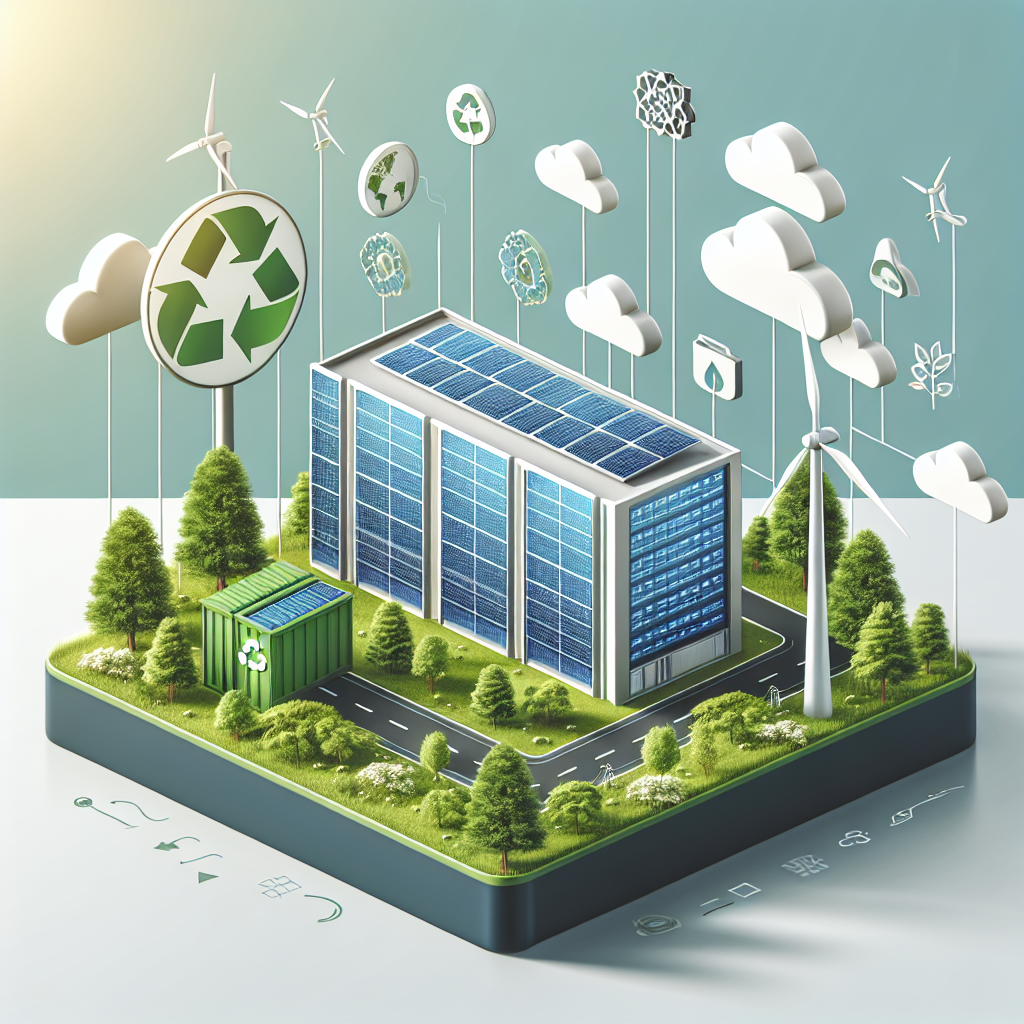
The Sustainable Data Center: How Companies are Prioritizing Environmental Responsibility
In recent years, there has been a growing trend towards environmental responsibility and sustainability in the business world. Companies are increasingly recognizing the importance of reducing their carbon footprint and minimizing their impact on the environment. One area where this commitment to sustainability is particularly evident is in the data center industry.Data centers are essential to the operation of modern businesses, housing the servers and networking equipment that power everything from websites to cloud services. However, data centers are also notorious for their high energy consumption and environmental impact. According to a report by the Natural Resources Defense Council, data centers in the United States alone consume about 2% of the country’s total electricity usage.
Recognizing the need to address this issue, many companies are now prioritizing sustainability in their data center operations. This includes implementing energy-efficient technologies, using renewable energy sources, and reducing waste and carbon emissions. By doing so, companies not only reduce their environmental impact but also save on energy costs and improve their overall efficiency.
One way companies are making their data centers more sustainable is by investing in energy-efficient infrastructure. This includes using more efficient servers, cooling systems, and power distribution units that consume less energy and produce fewer emissions. Companies are also exploring innovative cooling technologies, such as liquid cooling and free-air cooling, which can significantly reduce energy usage and improve the overall efficiency of the data center.
In addition to energy-efficient technologies, companies are also looking to renewable energy sources to power their data centers. Many companies are investing in solar panels, wind turbines, and other renewable energy sources to offset their electricity consumption and reduce their reliance on fossil fuels. Some companies are even partnering with utility providers to purchase renewable energy credits or enter into power purchase agreements to ensure that their data centers are powered by clean, renewable energy.
Another key focus for companies looking to make their data centers more sustainable is reducing waste and carbon emissions. This includes implementing recycling programs for e-waste, using energy-efficient lighting and equipment, and optimizing server utilization to reduce energy waste. Companies are also exploring ways to capture and reuse waste heat generated by their data centers, such as using it to heat office buildings or nearby homes.
Overall, the shift towards sustainability in the data center industry is a positive development for both businesses and the environment. By prioritizing environmental responsibility, companies can reduce their carbon footprint, lower their energy costs, and improve their overall efficiency. As the demand for data centers continues to grow, it is crucial that companies prioritize sustainability in their operations to ensure a more sustainable future for all.
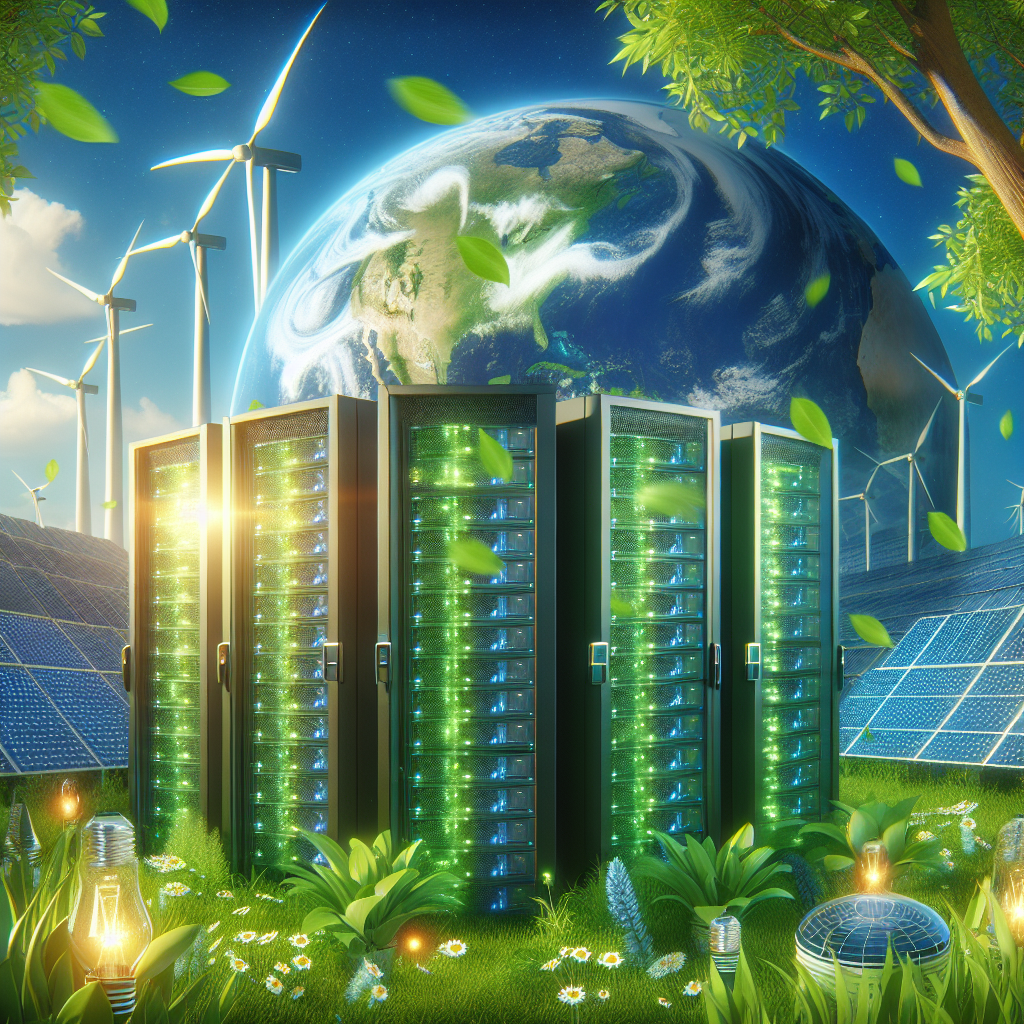
Sustainable Data Centers: How Companies are Going Green to Save the Planet
As the world becomes increasingly reliant on technology, the demand for data centers continues to grow. These facilities house servers, storage devices, and networking equipment that support the vast amount of data generated and processed by businesses and individuals every day. However, the environmental impact of data centers cannot be overlooked. The energy consumption required to power and cool these facilities is significant, leading to high levels of carbon emissions and other environmental concerns.In response to these challenges, many companies are making significant efforts to make their data centers more sustainable. By adopting green practices and technologies, these companies are not only reducing their carbon footprint but also saving money in the long run.
One of the key ways companies are greening their data centers is by investing in energy-efficient infrastructure. This includes using servers and storage devices that consume less power, as well as optimizing cooling systems to reduce energy usage. By implementing these measures, companies can significantly decrease their energy consumption and carbon emissions.
In addition to energy-efficient infrastructure, companies are also turning to renewable energy sources to power their data centers. Solar panels, wind turbines, and other forms of renewable energy are being increasingly used to offset the energy consumption of data centers. By harnessing the power of the sun, wind, and other renewable sources, companies can reduce their reliance on fossil fuels and further decrease their carbon footprint.
Furthermore, companies are implementing innovative cooling techniques to reduce the energy consumption of their data centers. For example, some companies are using outside air to cool their servers instead of traditional air conditioning systems. Others are exploring the use of liquid cooling technology, which is more energy-efficient than traditional air cooling methods.
Moreover, companies are also focusing on recycling and reusing materials within their data centers. By properly disposing of e-waste and repurposing old equipment, companies can minimize their environmental impact and reduce their carbon footprint.
Overall, the shift towards sustainable data centers is a positive development for both businesses and the environment. By investing in green technologies and practices, companies can reduce their energy consumption, lower their carbon emissions, and contribute to a healthier planet. As the demand for data centers continues to grow, it is crucial that companies prioritize sustainability and take proactive steps to protect the environment for future generations.
